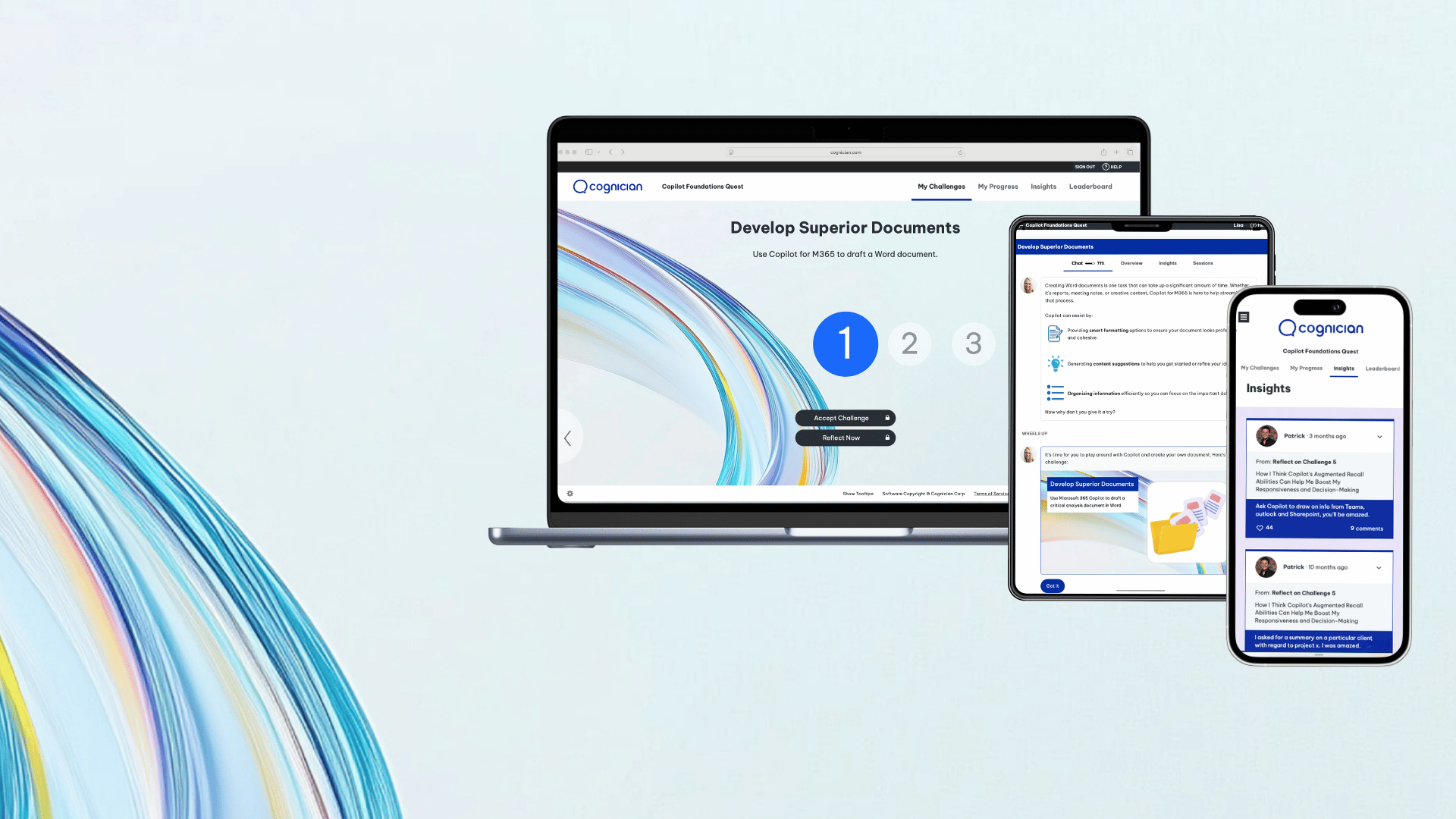Patrick Kayton, Cognician CEO, reflects on the Learning Technologies Exhibition in London. His conclusion? AI is everywhere, but most vendors are making the same fundamental mistake.
Every year I attend the Learning Technologies Exhibition in London with the intention of seeing what everyone’s up to in the world of corporate learning. It’s an opportunity to learn from others and be inspired by what our L&D colleagues have built. And it’s a great way to get a sense of what our clients will expect from us, based on what is becoming standard in digital learning offerings.
This year my take-away was simple: AI is everywhere and it’s what our clients will now expect. It was a headline feature on practically every stand I visited. And as Josh Bersin pointed out ahead of the conference, AI is enabling an L&D revolution.
But there’s still something missing. And nearly every vendor is making the same fundamental mistake. The same mistake underpinning the failure of the last 30 years of computer-based training, LMSs and LXPs. The mistake is that they’re all focusing on content, content, content. And there’s barely a word about something far more important: outcomes.
As I passed stand after stand, I saw the same headlines:
- AI-generated courses
- AI-generated content
- AI translations
Now let me first say that on the subject of translations I am really excited about what AI represents. I was genuinely impressed by at least one seamless automatic, in-platform translation and the tooling to manage it. This will save a lot of time and money in L&D. Our multinational clients spend a fortune on translations and this progress will change the game. Bravo!
But when it comes to AI-generated courses and content, I facepalm. All this will do is make it possible for L&D teams to do the same job they’re doing now, just faster and cheaper. More content will not help people in organisations to be more skilful. It will just mean more bloated LMSs.
What I had hoped to see were innovative uses of AI that enabled behaviour change in line with business outcomes. And sure, there were a few promising solutions. But before I go into those, we should explore an important question. How is it possible that AI can be revolutionising L&D, but without paying attention to outcomes? The answer is that most of the L&D practitioners we meet are not focused on outcomes because they are not measured on outcomes. They’re measured on completions and on learner satisfaction. They certainly care about outcomes. But there is little impetus to collect data on real business impact that results from a change in behaviour.
So why this focus on content rather than outcomes? The reason is that tracking completions is an easy problem to solve. It’s much harder to collaborate with functions and team leaders to measure the impact of learning initiatives over time and to isolate the variables that indicate ROI is related to training.
Similarly, it’s relatively easy to apply GenAI to the problem of creating courses and content. It’s much more difficult to figure out how to apply GenAI to the problem of behaviour change in service of business outcomes.
Now as I said, there were a few vendors at Learning Technologies with promising solutions. These fell into two categories: AI role-plays and AI coaching. In both cases, the emphasis is on the learner, not the content. Hear hear! But both solution types have a long way to go. I have yet to see an AI role-play with a smooth UX that quickly gets the learner somewhere useful. And much AI coaching has a similar problem. GenAI solutions tend to favour lengthy, divergent conversations, which can be fascinating. But learners are on the clock, which is why bite-sized learning became a thing in the first place.
Overall, I’m optimistic about what AI represents for L&D as a whole. And at Cognician we have brought GenAI into our offering in ways that have made our clients use comments like, “Game changer!” and “This is it! This is it!” And the reason we’re getting this kind of reaction is that we didn’t aim to solve an easy problem. We’re solving the same difficult problem we’ve been solving for 15 years: how do you get people to change the way they think and act and make it measurable? So, when we infused AI into our platform, it was in support of an obsession that is core to our DNA.
We’re not interested in doing mediocre work faster and cheaper. For us, adding GenAI has made the whole of Cognician greater than the sum of its parts by doubling down on outcomes.
So what’s the best use of GenAI you’ve seen for L&D or change management? And what concerns do you have? Would you like to see what we've done? Please reach out to us, we’d love to hear from you.



.png)

